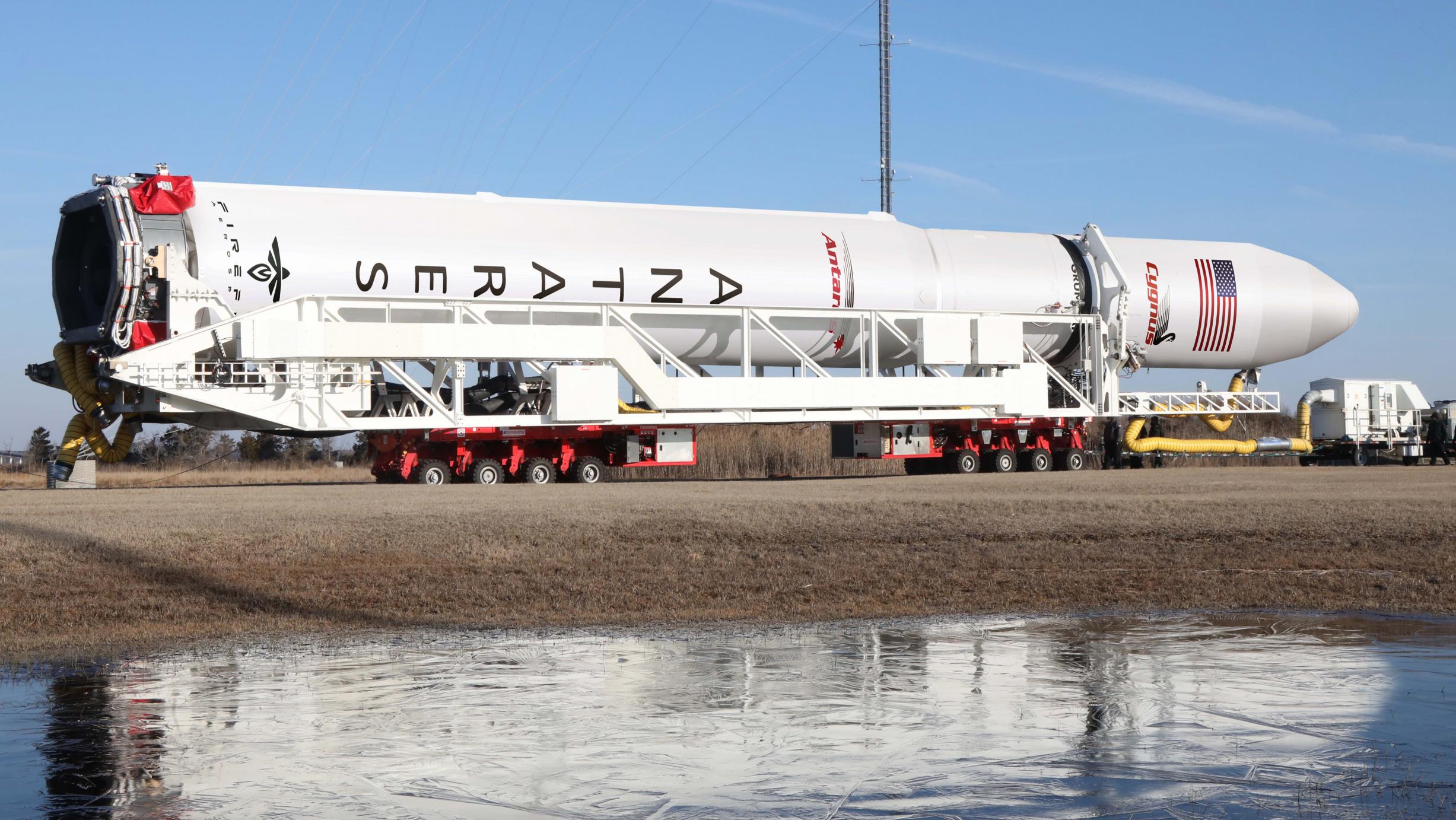
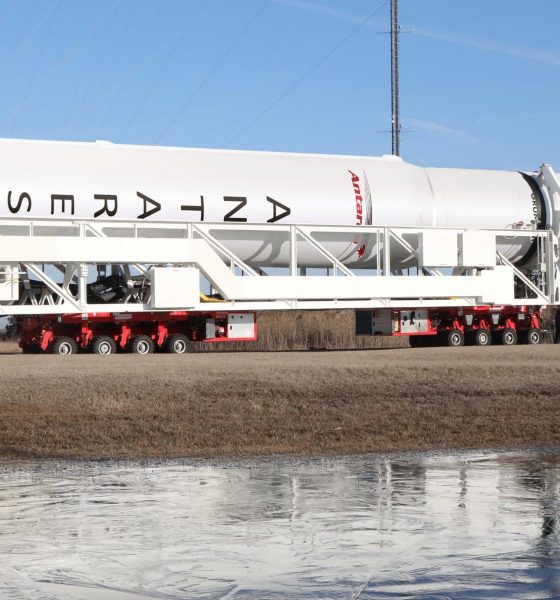
News
Northrop Grumman partners with Firefly and SpaceX to save Antares rocket, launch Cygnus spacecraft
Northrop Grumman has announced plans to partner with startup Firefly Aerospace to save (and upgrade) the conglomerate’s Antares rocket, which it uses to launch Cygnus cargo spacecraft to the International Space Station.
The new and improved Antares 330 rocket could debut as early as late 2024. The existing Antares 230 rocket has just two launches left before a lack of new hardware from crucial Ukrainian suppliers will permanently ground it – a time Northrop Grumman estimates will come as early as spring (Q2) 2023. To fill Antares’ 18-month availability gap, Northrop Grumman says it has purchased three SpaceX Falcon 9 launches to continue Cygnus space station cargo deliveries largely unabated.
In some ways, Northrop Grumman’s decision to purchase alternate launch services from SpaceX is surprising. After Antares suffered a catastrophic failure during an operational Cygnus launch in October 2014, Orbital Sciences chose to purchase three Atlas V launches from the United Launch Alliance (ULA) to ensure continued cargo deliveries while it attempted to return its own rocket to flight. Antares fully took over in 2017 after returning to flight in 2016.
However, seven or so years later, ULA is on the verge of retiring Atlas V and has already sold all remaining Atlas V launch contracts. Meanwhile, its next-generation Vulcan Centaur rocket is years behind schedule and unlikely to debut before 2023, making it extremely unlikely that ULA would have been able to fulfill Northrop Grumman’s desire to preserve its existing Cygnus launch schedule. It’s possible that Vulcan could have gotten the job done, but each Cygnus launch would have likely ended up several months (or more) behind schedule, thus requiring SpaceX and future provider Sierra Nevada Corporation to fill in the space station resource gaps Cygnus would leave.
With the benefit of hindsight and knowing that Antares 330 is unlikely to debut before late 2024 or 2025, it’s clear that SpaceX was the only viable option. Thanks to SpaceX operating in an entirely different universe of launch cadence and availability relative to the rest of the world, the company should have no issue whatsoever substituting a few of the dozens of Falcon 9 Starlink launches likely planned in 2023 and 2024 with Cygnus space station resupply runs.
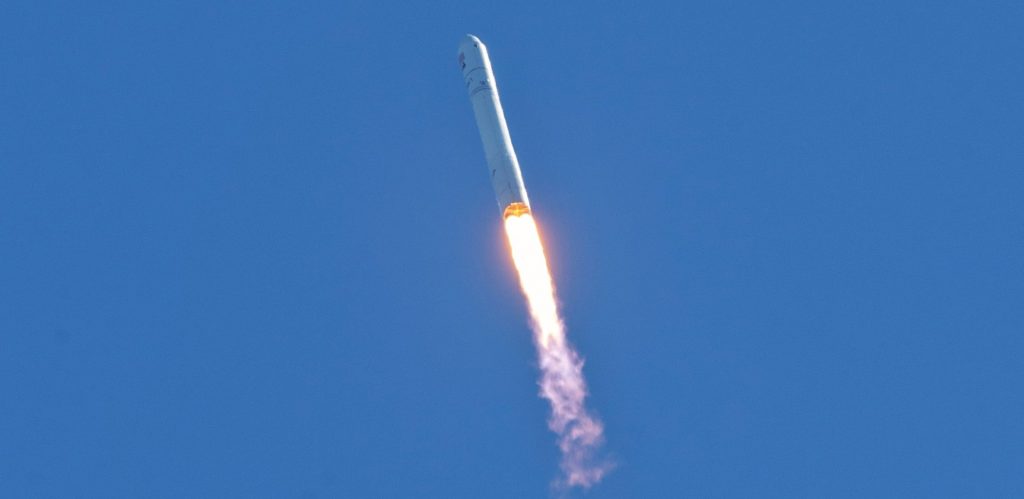
Northrop Grumman’s decision comes almost four months after Russia’s second illegal invasion of Ukraine, an action that immediately threw the future of its Antares rocket into question. The only major components of Antares-Cygnus Northrop Grumman (through its 2018 acquisition of Orbital ATK) is responsible for building are the rocket’s Castor 30XL second stage and Cygnus’ service module. Cygnus’ silver pressure vessel is built by Thales Alenia Space, the payload fairing is built by RUAG, the Antares booster engines are supplied by Russia’s NPO Energomash, and the Antares booster structures are built by Ukraine’s Yuzhnoye SDO and Yuzhmash.
Now embroiled in an open shooting war begun by Russia, Ukraine’s aerospace industry has been on borrowed time for several months. In July, the Yuzhmash factory was reportedly struck by cruise missiles, killing several people and presumably damaging the facility. Northrop Grumman’s August 8th announcement that it US startup Firefly Aerospace will build a domestic replacement for the Antares first stage all but guarantees that its former Ukrainian partners are no longer able to supply rocket hardware.
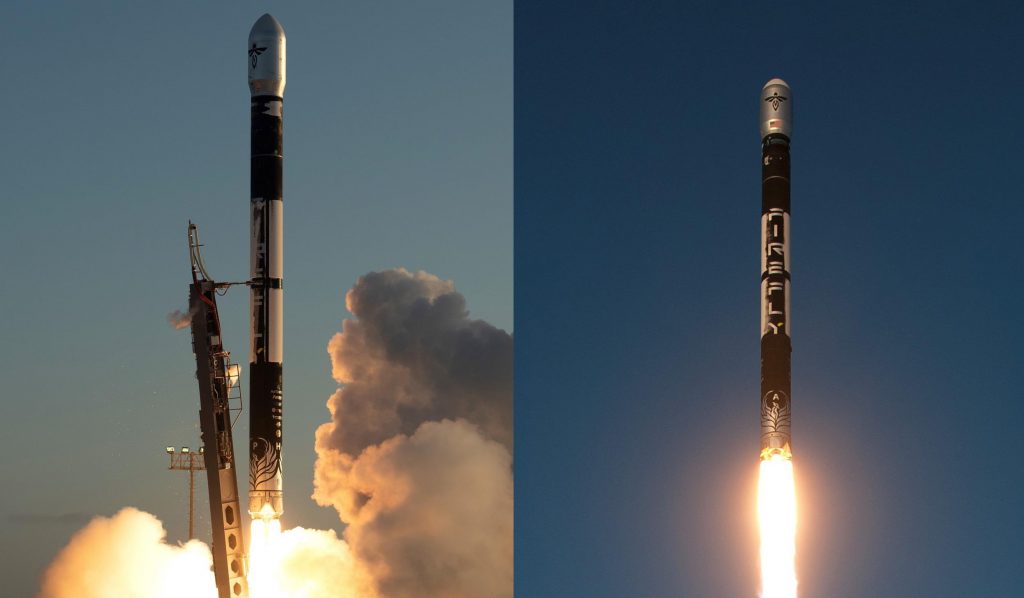
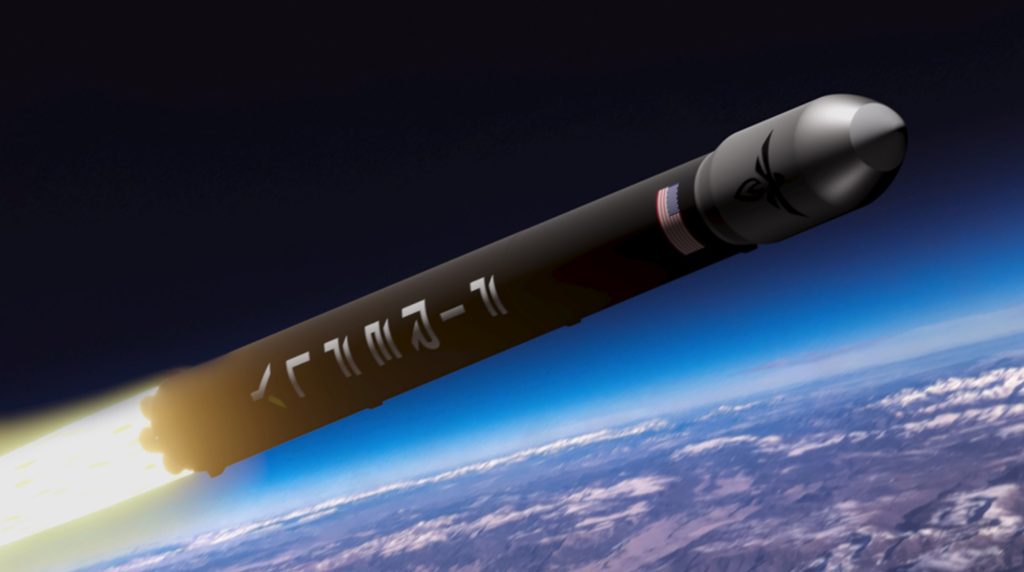
The Antares 330 booster Firefly intends to build for Northrop Grumman will be substantially larger and “significantly increase” the rocket’s performance to low Earth orbit (LEO), which currently sits at 8 tons (~17,500 lb). Intriguingly, the booster Firefly will supply appears to be the latest iteration of the first stage of the medium-lift Beta rocket the startup has been working on for some time. According to Firefly’s recently updated Beta webpage, the next-generation rocket is expected to measure 4.32 meters (14.1 ft) wide and 55.7 meters (182.5 ft) tall; produce about 720 tons (1.6M lbf) of thrust in vacuum, and launch up to 13 tons (28,700 lb) to LEO.

News
Tesla Model 3 named New Zealand’s best passenger car of 2025
Tesla flipped the switch on Full Self-Driving (Supervised) in September, turning every Model 3 and Model Y into New Zealand’s most advanced production car overnight.

The refreshed Tesla Model 3 has won the DRIVEN Car Guide AA Insurance NZ Car of the Year 2025 award in the Passenger Car category, beating all traditional and electric rivals.
Judges praised the all-electric sedan’s driving dynamics, value-packed EV tech, and the game-changing addition of Full Self-Driving (Supervised) that went live in New Zealand this September.
Why the Model 3 clinched the crown
DRIVEN admitted they were late to the “Highland” party because the updated sedan arrived in New Zealand as a 2024 model, just before the new Model Y stole the headlines. Yet two things forced a re-evaluation this year.
First, experiencing the new Model Y reminded testers how many big upgrades originated in the Model 3, such as the smoother ride, quieter cabin, ventilated seats, rear touchscreen, and stalk-less minimalist interior. Second, and far more importantly, Tesla flipped the switch on Full Self-Driving (Supervised) in September, turning every Model 3 and Model Y into New Zealand’s most advanced production car overnight.
FSD changes everything for Kiwi buyers
The publication called the entry-level rear-wheel-drive version “good to drive and represents a lot of EV technology for the money,” but highlighted that FSD elevates it into another league. “Make no mistake, despite the ‘Supervised’ bit in the name that requires you to remain ready to take control, it’s autonomous and very capable in some surprisingly tricky scenarios,” the review stated.
At NZ$11,400, FSD is far from cheap, but Tesla also offers FSD (Supervised) on a $159 monthly subscription, making the tech accessible without the full upfront investment. That’s a game-changer, as it allows users to access the company’s most advanced system without forking over a huge amount of money.
News
Tesla starts rolling out FSD V14.2.1 to AI4 vehicles including Cybertruck
FSD V14.2.1 was released just about a week after the initial FSD V14.2 update was rolled out.

It appears that the Tesla AI team burned the midnight oil, allowing them to release FSD V14.2.1 on Thanksgiving. The update has been reported by Tesla owners with AI4 vehicles, as well as Cybertruck owners.
For the Tesla AI team, at least, it appears that work really does not stop.
FSD V14.2.1
Initial posts about FSD V14.2.1 were shared by Tesla owners on social media platform X. As per the Tesla owners, V14.2.1 appears to be a point update that’s designed to polish the features and capacities that have been available in FSD V14. A look at the release notes for FSD V14.2.1, however, shows that an extra line has been added.
“Camera visibility can lead to increased attention monitoring sensitivity.”
Whether this could lead to more drivers being alerted to pay attention to the roads more remains to be seen. This would likely become evident as soon as the first batch of videos from Tesla owners who received V14.21 start sharing their first drive impressions of the update. Despite the update being released on Thanksgiving, it would not be surprising if first impressions videos of FSD V14.2.1 are shared today, just the same.
Rapid FSD releases
What is rather interesting and impressive is the fact that FSD V14.2.1 was released just about a week after the initial FSD V14.2 update was rolled out. This bodes well for Tesla’s FSD users, especially since CEO Elon Musk has stated in the past that the V14.2 series will be for “widespread use.”
FSD V14 has so far received numerous positive reviews from Tesla owners, with numerous drivers noting that the system now drives better than most human drivers because it is cautious, confident, and considerate at the same time. The only question now, really, is if the V14.2 series does make it to the company’s wide FSD fleet, which is still populated by numerous HW3 vehicles.
News
Waymo rider data hints that Tesla’s Cybercab strategy might be the smartest, after all
These observations all but validate Tesla’s controversial two-seat Cybercab strategy, which has caught a lot of criticism since it was unveiled last year.
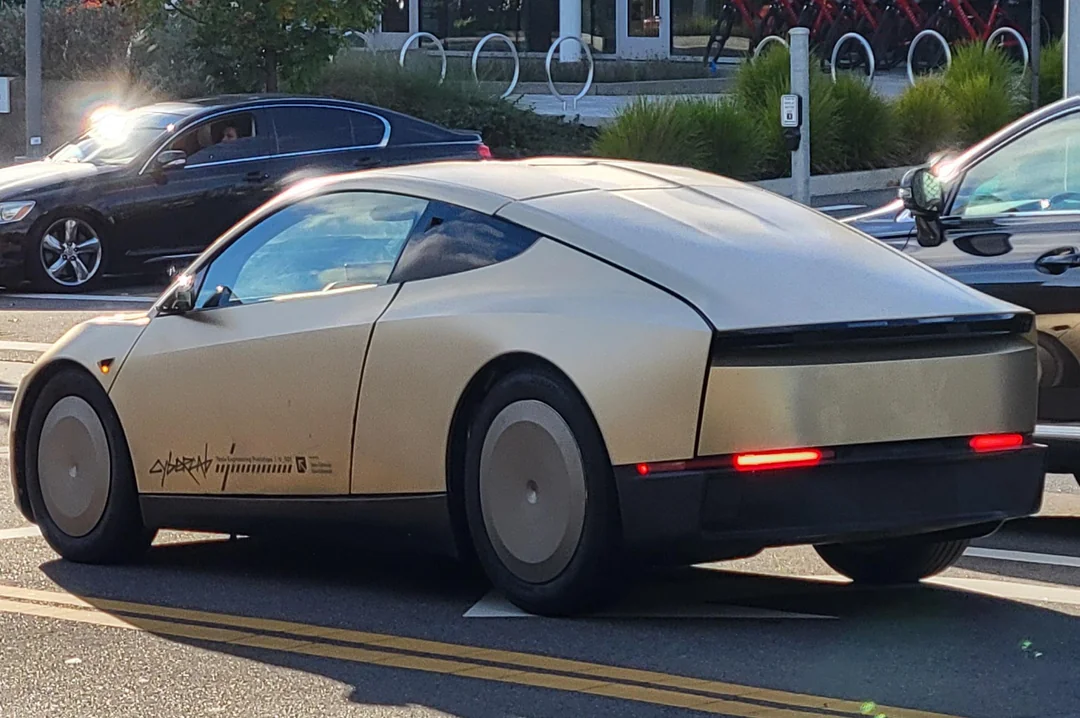
Toyota Connected Europe designer Karim Dia Toubajie has highlighted a particular trend that became evident in Waymo’s Q3 2025 occupancy stats. As it turned out, 90% of the trips taken by the driverless taxis carried two or fewer passengers.
These observations all but validate Tesla’s controversial two-seat Cybercab strategy, which has caught a lot of criticism since it was unveiled last year.
Toyota designer observes a trend
Karim Dia Toubajie, Lead Product Designer (Sustainable Mobility) at Toyota Connected Europe, analyzed Waymo’s latest California Public Utilities Commission filings and posted the results on LinkedIn this week.
“90% of robotaxi trips have 2 or less passengers, so why are we using 5-seater vehicles?” Toubajie asked. He continued: “90% of trips have 2 or less people, 75% of trips have 1 or less people.” He accompanied his comments with a graphic showing Waymo’s occupancy rates, which showed 71% of trips having one passenger, 15% of trips having two passengers, 6% of trips having three passengers, 5% of trips having zero passengers, and only 3% of trips having four passengers.
The data excludes operational trips like depot runs or charging, though Toubajie pointed out that most of the time, Waymo’s massive self-driving taxis are really just transporting 1 or 2 people, at times even no passengers at all. “This means that most of the time, the vehicle being used significantly outweighs the needs of the trip,” the Toyota designer wrote in his post.
Cybercab suddenly looks perfectly sized
Toubajie gave a nod to Tesla’s approach. “The Tesla Cybercab announced in 2024, is a 2-seater robotaxi with a 50kWh battery but I still believe this is on the larger side of what’s required for most trips,” he wrote.
With Waymo’s own numbers now proving 90% of demand fits two seats or fewer, the wheel-less, lidar-free Cybercab now looks like the smartest play in the room. The Cybercab is designed to be easy to produce, with CEO Elon Musk commenting that its product line would resemble a consumer electronics factory more than an automotive plant. This means that the Cybercab could saturate the roads quickly once it is deployed.
While the Cybercab will likely take the lion’s share of Tesla’s ride-hailing passengers, the Model 3 sedan and Model Y crossover would be perfect for the remaining 9% of riders who require larger vehicles. This should be easy to implement for Tesla, as the Model Y and Model 3 are both mass-market vehicles.









